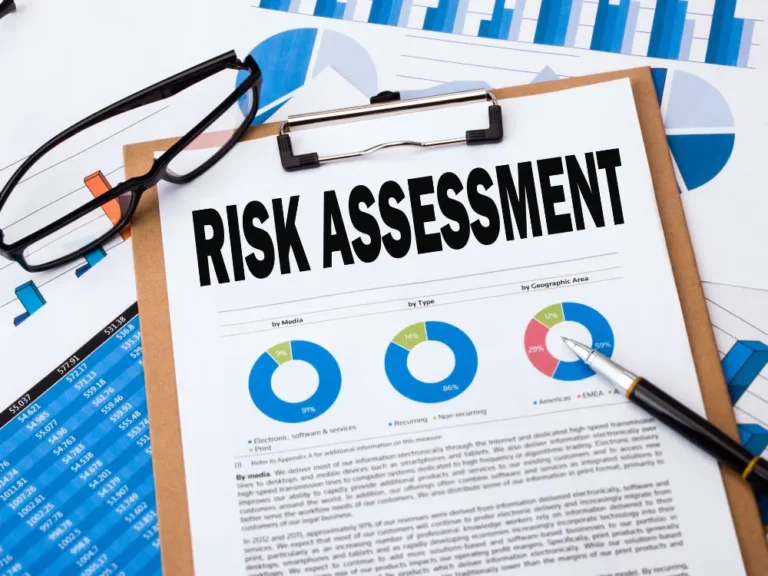Risk assessment is defined as a systematic process of evaluating the potential hazards and risks, their likelihood, consequences, and tolerance for such incidents. Risk assessment is applicable in different sectors such as IT systems, health and safety at work, operational risks, and others. However, today security guard services experts will concentrate the discussion on common aspects of risk assessment and the thing you should know to successfully manage risks and risk assessment.
Table of Contents
The guide to the risk assessment process
Risk assessment is the way to avoid severe consequences by being prepared for potential risks.
The first step in risk assessment is recognizing hazards.
- This is a part of the process where you must identify processes, situations, and occurrences that might be hazardous and cause harm or damage to the system. This step is crucial as it defines the likeness of the occurrence of hazards and the consequences they might cause.
The hazards include:
- Natural disasters (fire, floods, earthquakes, hurricanes, tornados)
- Biological hazards (foodborne diseases, pandemics, infections of different sources)
- Accidents in the workplace (accidents during transport, failures in structures, mechanical injuries)
- Intentional acts (robberies, arsons, various body threats by people)
- Chemical hazards (cleaning toxic chemicals, asbestos, and other toxic fluids and materials)
- Mental hazards (bullying, excess working hours)
- Interruptions in the working process or supply chain
- The second step considers defining how the hazards or rick can cause harm and how or what. In this step, analyzing and estimating the risks should determine the consequences they might cause on humans, material things, systems, processes, or data. Identifying who can be harmed by external factors or business activities is an important step in prevention.
- The third step encompasses the risk evaluation and determining the precautionary measures. In this phase, the risk assessment team determines the steps and actions they can apply to prevent these hazards from taking place or the measures that can be taken in an effort to put hazards in control if a certain hazard and risk can not be completely eliminated. Risk evaluation helps in prioritizing the hazards and the risks that encompass the high levels, which should be primarily reduced.
- The fourth step is recording the findings and conclusions and implementing them. The regulations require having a risk assessment plan written down if the office encompasses more than five employees. Depending on the industry, a planned recording should include different elements.
- The last step considers reviewing the assessments and updating them when necessary. As changes constantly occur, so do the requirements to apply new and adjusted assessments. Regular review of risk assessment provides the opportunity to be up to date with new hazards and the ability to manage the risks, thus comprehending the measures that are no longer effective.
At this point, we should distinguish the terms risk and hazard in risk assessment. In the risk assessment plan, a hazard is considered everything that can cause harm or damage. Therefore, a hazard can be an incident, emergency situation, accident, toxic substance, or every other occurrence, person, or activity that can cause any kind of harm.
On the other hand, the risk is considered as a chance that a hazard will cause harm. Meaning the risk is a calculation of the likelihood that a potential hazard will take place.
The goal of risk assessment
The goal of risk assessment varies depending on the industry. However, the mutual goal of risk assessment, regarding the industry is to prepare an organization for potential risks and the way to conflict with them. Besides these primary goals, secondary risk assessment goals are:
- Providing the data based on analyzing possible threats
- Preventing injuries, illnesses, and damage
- Covering legal requirements
- Increasing the awareness of potential hazards and risks
- Making assets inventory
- Validating the expenses of managing risks
- Predicting and determining the budget for managing the risks
- Comprehending the return on investment
Preparing for the risk assessment process
Before starting a risk assessment process, there are a few aspects you should consider: the scope of assessment, required resources, required stakeholders and regulations, and laws that have to be met.
Scope considers defining activities, processes, functions, and locations involved in risk assessment. The scope of assessment determines the required time and resources to manage risk assessment and what it includes and excludes so that you can establish the budget.
Resources encompasses needed requirements to conduct the risk assessment process. Resources consider planning the financial assets, personnel, and time that is required for managing, developing, and implementing risk assessment.
Stakeholders consider the person that is involved in risk assessment. This is usually a team with leaders with specific roles and experts for particular subject matters.
Regulations and laws are diverse in different industries and domains. Regulations prescribe mandatory requirements and rules for governing risks and hazards in a particular field. When planning an assessment, keep in mind the laws and regulations so that your risk assessment is compliant with standards.
Final Thoughts
Applying the risk assessment provides you the ability to manage any potential risks. Preventing property damage and hurting people is the priority in every occupation. Thus, state policies demand meeting the requirements and standards of risk assessment prescribed for every particular industry.

